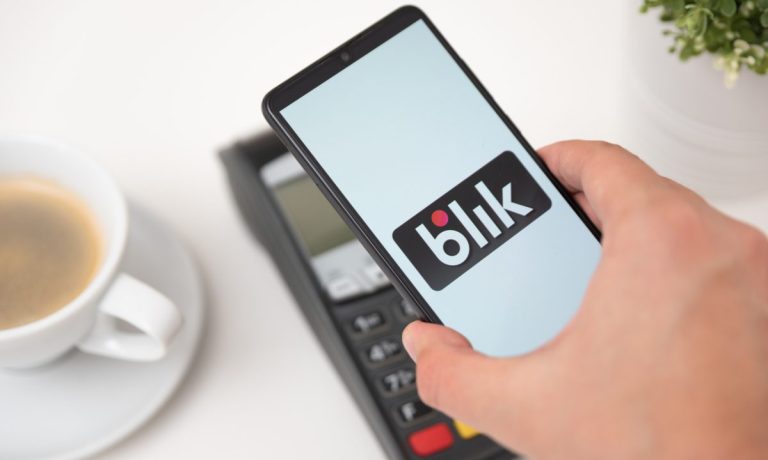Polish Consumers Embrace Contactless as POS Payments Jump 162% YoY

Mobile payments in Poland have made significant ground in recent years.
Leading the charge is BLIK, the bank-backed payment system which has been fueling digital payments growth in the eastern European country since it launched in 2015.
This month, the Warsaw-based FinTech company reported that users made more than 1.2 billion transactions worth PLN 163.9 billion ($36.68 billion) in 2022, while noting a year-over-year (YoY) increase of 110% and 162% in the number of BLIK phone transfers and point-of-sale (POS) payments, respectively, during that same period.
In a statement released alongside the results, Dariusz Mazurkiewicz, CEO of Polski Standard Płatności, the operator of the BLIK mobile payment system, said 2022 was a “landmark year” for the company, which as of December counts an active user base of almost 13 million — about 35% of Poland’s total population.
In addition to facilitating online payments, the Polish mobile payments service provider has partnered with Mastercard to incorporate near field communication (NFC) functionality into several of the 15-plus domestic banks’ apps that support its mobile payments solution.
As a result of that move, millions of BLIK users can use their Android phone’s NFC chip to make contactless payments directly at the POS without a debit or credit card.
And data shows the tap-and-go feature is gradually catching on with Poles less than a year after launch. According to the report, out of the 228 million BLIK payment transactions recorded at traditional payment terminals in 2022, 70 million of them (30%) were contactless payments.
“The growing popularity of contactless BLIK translates into an overall interest in this payment method at brick-and-mortar shops and service outlets,” Mazurkiewicz said, adding that “the POS channel currently accounts for one fifth of all BLIK transactions.”
Leveraging a ‘Winning Technology’
While the contactless feature is only available on Android devices, integrating NFC into mobile payments remains a big win for BLIK, putting it ahead of other European payment systems like Switzerland’s TWINT or Bizum in Spain, which are limited to QR code-based contactless payments.
What’s more, Apple’s exclusive hold over the iPhone’s NFC payment capacity may not last much longer following an EU antitrust probe into Apple Pay that may eventually force the U.S. tech giant to change course, opening the infrastructure to other mobile payment systems like BLIK.
In a previous interview with PYMNTS, Mazurkiewicz referred to NFC as a “winning technology,” and pointed to how the Mastercard arrangement empowers BLIK users to use the digital wallet not just in Europe, but anywhere in the world where Mastercard is accepted. And as the report noted, contactless BLIK has been used to carry out payments in 117 countries on six continents since it was launched in 2021.
To further strengthen its local position, the Polish firm recently welcomed Ukrainian neobank Mono, which announced earlier this year that it will launch a new digital banking app in Poland under the Stereo brand, into its network.
The digital bank is targeting the more than 9 million Ukrainian refugees that have entered Poland in the past year, empowering them to make payments and manage their Polish zloty via a Ukrainian-language app. It will also integrate a cross-border payments feature, enabling users in Poland to send remittances to Ukraine.
Beyond its home turf, BLIK announced the acquisition of Slovakian mobile transaction service provider VIAMO in August of last year per a PYMNTS report, marking its first regional and global foray.
At the time, Mazurkiewicz said the acquisition was an important step aimed at strengthening its position in the region: “We see a huge potential of this market, especially in the context of our action plans throughout the euro area.”
For all PYMNTS EMEA coverage, subscribe to the daily EMEA Newsletter.